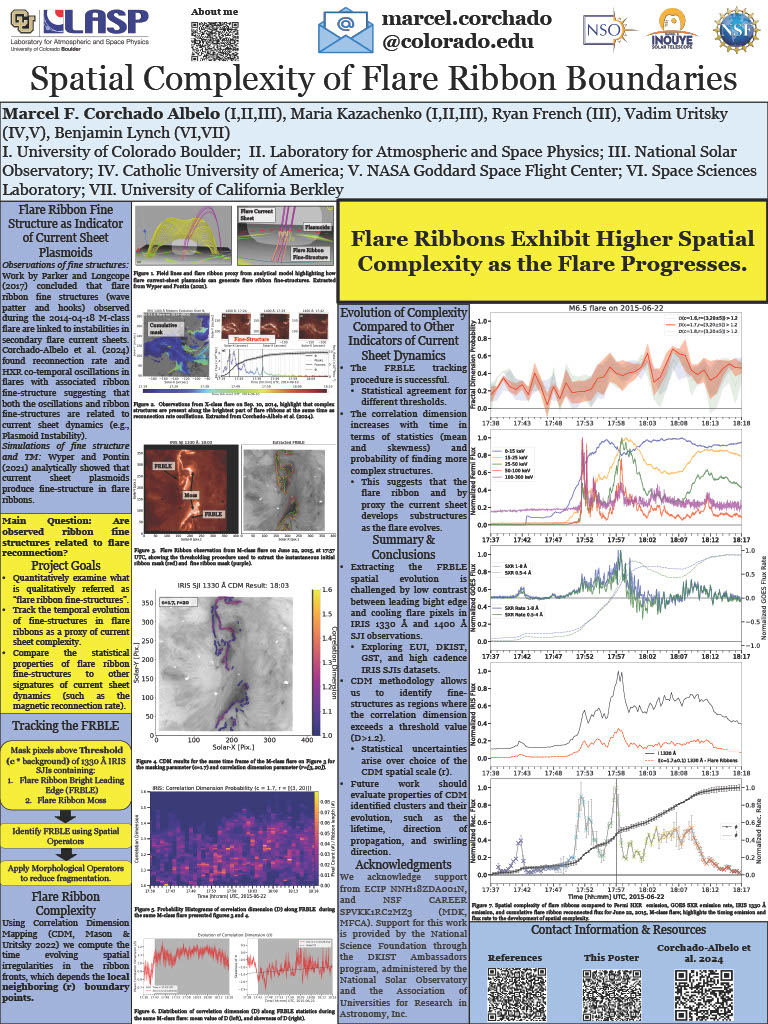Authors: Marcel F. Corchado-Albelo (Department of Astrophysical and Planetary Science/University of Colorado Boulder, Laboratory for Atmospheric and Space Physics, National Solar Observatory), Maria D. Kazachenko (Department of Astrophysical and Planetary Science/University of Colorado Boulder, Laboratory for Atmospheric and Space Physics, National Solar Observatory), Ryan J. French (National Solar Observatory), Benjamin J. Lynch (Space Science Laboratory, University of California Berkeley), Vadim M. Uritsky (Catholic University of America, NASA Goddard Space Flight Center)
We use high-resolution Interface Region Imaging Spectrograph (IRIS) 1330 and 1400 Å Slit-Jaw Imager (SJI) observations of several flares to quantify the fractal properties of “fine-structures” in the flare ribbon boundary for the first time. Our working hypothesis is that these structures could serve as an indirect proxy to processes in the flare current sheet, as has been suggested by previous studies (e.g. Wyper & Pontin 2021). We compute the spatial fractal dimension over the ribbons’ boundary using the correlation dimension mapping (CDM) method. We then quantify how this fractal dimension evolves during the flare and compare it with other observed flare properties, including reconnection rate and particle acceleration proxies.




